 (Patti was the former director of the Old Capitol Museum of Mississippi History in Jackson, Mississippi. You can read about her and her publications here .)
(Patti was the former director of the Old Capitol Museum of Mississippi History in Jackson, Mississippi. You can read about her and her publications here .)And this is one of those very SMALL WORLD stories: I noticed that the (delightful) illustrations in the book were done by Patti Henson. I’ve been trying to chase her down, because there was a Patti Henson in my class all the way through junior and senior high school. So, today I found her!  Here’s her senior picture from high school (left). We just got off the phone together. I remember that Patti was one of the “serious” artists in our senior art class in high school, but we did work together on stage scenery that year. We just had a great “phone reunion” and I hope to see her some time when I’m in Jackson to visit my mom. She’s done a few book covers and other graphic design work, and has recently gotten into watercolor. I hope to see more of her work some day.
Here’s her senior picture from high school (left). We just got off the phone together. I remember that Patti was one of the “serious” artists in our senior art class in high school, but we did work together on stage scenery that year. We just had a great “phone reunion” and I hope to see her some time when I’m in Jackson to visit my mom. She’s done a few book covers and other graphic design work, and has recently gotten into watercolor. I hope to see more of her work some day.  Here’s Patti, when we were seniors in high school, working on stage scenery (right).
Here’s Patti, when we were seniors in high school, working on stage scenery (right).
So… I enjoyed the book on the beach in Gulf Shores so much I decided to share some of the quizzes on my blog from time to time, beginning with this one. Since we just drove through parts of Mississippi, Louisiana and Alabama before returning to Tennessee, I’m feeling the vibes of these writers and their hometowns.
 Here’s her senior picture from high school (left). We just got off the phone together. I remember that Patti was one of the “serious” artists in our senior art class in high school, but we did work together on stage scenery that year. We just had a great “phone reunion” and I hope to see her some time when I’m in Jackson to visit my mom. She’s done a few book covers and other graphic design work, and has recently gotten into watercolor. I hope to see more of her work some day.
Here’s her senior picture from high school (left). We just got off the phone together. I remember that Patti was one of the “serious” artists in our senior art class in high school, but we did work together on stage scenery that year. We just had a great “phone reunion” and I hope to see her some time when I’m in Jackson to visit my mom. She’s done a few book covers and other graphic design work, and has recently gotten into watercolor. I hope to see more of her work some day.  Here’s Patti, when we were seniors in high school, working on stage scenery (right).
Here’s Patti, when we were seniors in high school, working on stage scenery (right).So… I enjoyed the book on the beach in Gulf Shores so much I decided to share some of the quizzes on my blog from time to time, beginning with this one. Since we just drove through parts of Mississippi, Louisiana and Alabama before returning to Tennessee, I’m feeling the vibes of these writers and their hometowns.
Match these Southern writers and the towns associated with them, either as their birthplaces or the places where they later lived and worked:
1. Lillian Hellman
2. Ellen Glasgow
3. Elizabeth Roberts
4. Katherine Anne Porter
5. Flannery O’Connor
6. Eudora Welty
1. Lillian Hellman
2. Ellen Glasgow
3. Elizabeth Roberts
4. Katherine Anne Porter
5. Flannery O’Connor
6. Eudora Welty
7. Conrad Aiken
8. Kate Chopin
8. Kate Chopin
9. William Faulkner
10. Thomas Wolfe
11. Marjoorie Rawlings
12. Richard Wright
13. William Styron
14. Joan Williams
15. Carson McCullers
16. Walker Percy
10. Thomas Wolfe
11. Marjoorie Rawlings
12. Richard Wright
13. William Styron
14. Joan Williams
15. Carson McCullers
16. Walker Percy
17. James Agee
18. Shelby Foote
18. Shelby Foote
19. James Dickey
20. Willie Morris
And the towns to match the authors with:
a. Natchez, Mississippi
b. Memphis, Tennessee
c. Newport News, Virginia
d. Oxford, Mississippi
e. Greenville, Mississippi
f. Cross Creek, Florida
g. Savannah, Georgia
h. Milledgeville, Georgia
i. Knoxville, Tennessee
j. Atlanta, Georgia
k. Covington, Louisiana
l. Richmond, Virginia
m. Jackson, Mississippi
n. Yazoo City, Mississippi
0. Columbus, Georgia
p. Springfield, Kentucky
q. Cloutierville, Louisiana
r. New Orleans, Louisiana
s. Indian Creek, Texas
t. Asheville, North Carolina
I’ll post the answers on my next blog so you can see how well you did!
And speaking of Southern writers… one week from today I’ll be back in Oxford for the 2008 Yoknapatawpha Summers Writers Workshop . The faculty is shaping up wonderfully, including my favorite poet, Beth Ann Fennelly, Neal Walsh
Yoknapatawpha Summers Writers Workshop . The faculty is shaping up wonderfully, including my favorite poet, Beth Ann Fennelly, Neal Walsh  (last year’s critique moderator, a graduate of the Ole Miss MFA program, now at LSU), and others. You can still register (and send a writing sample) through Monday, June 2. This is the workshop (last year) that I met my friends Doug, Patti, Herman and Tom, and the five of us formed the Yoknapatawpha Writers Group. We’ve been meeting monthly since last August, critiquing each other’s work and having a great time together.
(last year’s critique moderator, a graduate of the Ole Miss MFA program, now at LSU), and others. You can still register (and send a writing sample) through Monday, June 2. This is the workshop (last year) that I met my friends Doug, Patti, Herman and Tom, and the five of us formed the Yoknapatawpha Writers Group. We’ve been meeting monthly since last August, critiquing each other’s work and having a great time together.

It’s almost June, so I thought I’d include something in this post about “beach reads.” We’ve already been to the beach, and I enjoyed Elizabeth Dewberry’s book, Break the Heart of Me, which I also got at Faulkner House Books in New Orleans. Actually I bought two of Dewberry’s books, which are novels based on aspects of her life. The other one is His Lovely Wife, which I haven’t started yet.
reads.” We’ve already been to the beach, and I enjoyed Elizabeth Dewberry’s book, Break the Heart of Me, which I also got at Faulkner House Books in New Orleans. Actually I bought two of Dewberry’s books, which are novels based on aspects of her life. The other one is His Lovely Wife, which I haven’t started yet.
If you want some suggestions from authors, check out “Best Summer Books” in the June issue of Real Simple: “Ten beloved top-selling authors share their favorite lazy-summer day reads.” The books are sorted into categories: one-day reads, books for a long weekend, and books to savor all summer. Some of the authors who share their beach read suggestions are Augusten Burroughs, Jackie Collins, Elizabeth Gilbert and Jodi Picoult, so there’s a diverse offering.
Real Simple: “Ten beloved top-selling authors share their favorite lazy-summer day reads.” The books are sorted into categories: one-day reads, books for a long weekend, and books to savor all summer. Some of the authors who share their beach read suggestions are Augusten Burroughs, Jackie Collins, Elizabeth Gilbert and Jodi Picoult, so there’s a diverse offering.
So… happy summer reading!
And writing! Remember to register for the Yoknapatawpha Summer Writers Workshop HERE … by Monday!
Have a great weekend. And if you didn’t have a chance to comment on Tuesday’s blog—The End of Art?—just scroll down to the next post and spend a little time with it. I really appreciate the 160 people who visited the blog, and especially everyone's comments.
And speaking of Southern writers… one week from today I’ll be back in Oxford for the 2008
 Yoknapatawpha Summers Writers Workshop . The faculty is shaping up wonderfully, including my favorite poet, Beth Ann Fennelly, Neal Walsh
Yoknapatawpha Summers Writers Workshop . The faculty is shaping up wonderfully, including my favorite poet, Beth Ann Fennelly, Neal Walsh  (last year’s critique moderator, a graduate of the Ole Miss MFA program, now at LSU), and others. You can still register (and send a writing sample) through Monday, June 2. This is the workshop (last year) that I met my friends Doug, Patti, Herman and Tom, and the five of us formed the Yoknapatawpha Writers Group. We’ve been meeting monthly since last August, critiquing each other’s work and having a great time together.
(last year’s critique moderator, a graduate of the Ole Miss MFA program, now at LSU), and others. You can still register (and send a writing sample) through Monday, June 2. This is the workshop (last year) that I met my friends Doug, Patti, Herman and Tom, and the five of us formed the Yoknapatawpha Writers Group. We’ve been meeting monthly since last August, critiquing each other’s work and having a great time together.
It’s almost June, so I thought I’d include something in this post about “beach
 reads.” We’ve already been to the beach, and I enjoyed Elizabeth Dewberry’s book, Break the Heart of Me, which I also got at Faulkner House Books in New Orleans. Actually I bought two of Dewberry’s books, which are novels based on aspects of her life. The other one is His Lovely Wife, which I haven’t started yet.
reads.” We’ve already been to the beach, and I enjoyed Elizabeth Dewberry’s book, Break the Heart of Me, which I also got at Faulkner House Books in New Orleans. Actually I bought two of Dewberry’s books, which are novels based on aspects of her life. The other one is His Lovely Wife, which I haven’t started yet.If you want some suggestions from authors, check out “Best Summer Books” in the June issue of
 Real Simple: “Ten beloved top-selling authors share their favorite lazy-summer day reads.” The books are sorted into categories: one-day reads, books for a long weekend, and books to savor all summer. Some of the authors who share their beach read suggestions are Augusten Burroughs, Jackie Collins, Elizabeth Gilbert and Jodi Picoult, so there’s a diverse offering.
Real Simple: “Ten beloved top-selling authors share their favorite lazy-summer day reads.” The books are sorted into categories: one-day reads, books for a long weekend, and books to savor all summer. Some of the authors who share their beach read suggestions are Augusten Burroughs, Jackie Collins, Elizabeth Gilbert and Jodi Picoult, so there’s a diverse offering.So… happy summer reading!
And writing! Remember to register for the Yoknapatawpha Summer Writers Workshop HERE … by Monday!
Have a great weekend. And if you didn’t have a chance to comment on Tuesday’s blog—The End of Art?—just scroll down to the next post and spend a little time with it. I really appreciate the 160 people who visited the blog, and especially everyone's comments.
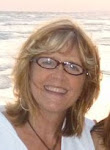

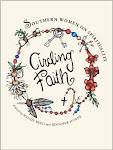
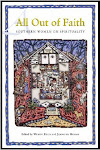
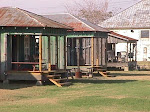



































































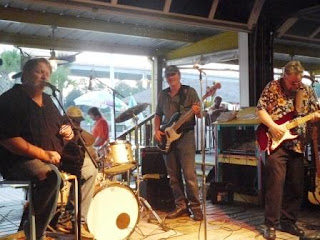


















 My next stop was
My next stop was 









